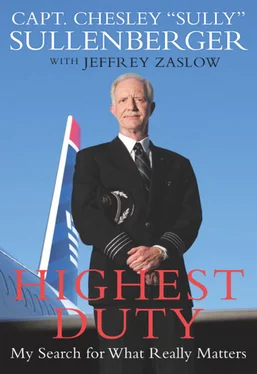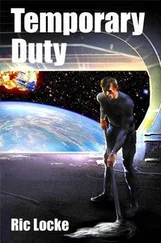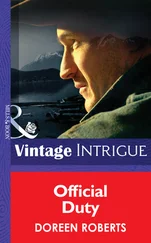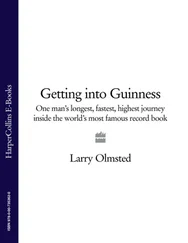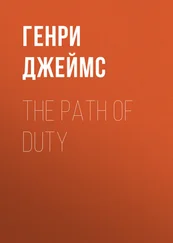Historically, safety advances in aviation often have been purchased with blood. It seems sometimes we’ve had to wait until the body count has risen high enough to create public awareness or political will. The worst air tragedies have led to the most important changes in design, training, regulations, or airline practices.
Airline disasters get massive media coverage, and the public’s reaction in response to these tragedies has helped focus government and industry attention on safety issues.
People have incredibly high expectations for airline travel, and they should. But they don’t always put the risks in perspective. Consider that more than thirty-seven thousand people died in auto accidents in the United States last year. That was about seven hundred a week, yet we never heard about most of those fatalities because they happened one or two at a time. Now imagine if seven hundred people were dying every week in airline accidents; the equivalent of a commercial jet crashing almost every day. The airports would be shut down and every airliner would be grounded.
In aviation, we should always aim for zero accidents. To come closer to accomplishing this, we must have the integrity to always do the right things, even if they cost more money. We have to build on all the hard work of the last 106 years, and not assume we can just rely on the progress made by previous generations. We need to keep renewing our investments in people, systems, and technologies to maintain the high level of safety we all deserve. It won’t happen by itself. We have to choose to do this. This same prescription applies to many other industries and occupations.
Commercial aviation is one of several professions in which knowledge, skill, diligence, judgment, and experience are so important. With the lives of hundreds of passengers in our care, pilots know the stakes are high. That’s why, long before Flight 1549, I read about and learned from the experiences of others. It matters.
WHEN I arrived in the cockpit of Flight 1549, I would be aided by the courageous efforts of pilots who had come before me.
There were the two unheralded test pilots who, on September 20, 1944, risked their lives by landing their B-24 Liberator in Virginia’s James River. This was a voluntary ditching, considered the first test on a full-size aircraft. As the plane hydroplaned for several hundred feet, which almost completely severed the bomber’s nose section, engineers watched from a nearby boat, collecting data on how it fared. The pilots survived.
The following day, the Daily Press in Newport News had this headline: B-24 “DITCHED” TO EXPERIMENT ON STRUCTURES—JAMES RIVER TEST DESIGNED TO SAVE LIVES IN THE FUTURE.
By that day in 1944, the Allies had already ditched scores of bombers in World War II, often in the English Channel. Most filled with water and sank quickly; hundreds of crew members drowned. Better procedures for ditching were desperately needed.
As a recent Daily Press story explained, it took thirteen more years after that test in Virginia for a full report to be written on how best to attempt a water landing while piloting a distressed aircraft. That report called for landing gear to be retracted rather than extended. It described why an airplane should fly as slowly as possible, and why wing flaps should be down for impact. It also called for the nose to be up in most cases. These procedural guidelines remain in use today, and were in my head on Flight 1549.
As a student of history, I am awed when I read of the actions taken by these pilots in earlier eras. They didn’t have all the data that now aids us in our decisions. They didn’t have the benefit of all the additional decades of trial and error in aircraft design. They acted with the mental and physical tool kits available to them.
Perhaps the most famous water landing prior to Flight 1549 happened on October 15, 1956. It was Pan American Airways Flight 943, bound from Honolulu to San Francisco with twenty-five passengers. There were also forty-four cases of live canaries in the cargo hold.
In the middle of the Pacific, in the middle of the night, the Boeing 377 Stratocruiser lost two engines, and its remaining two engines were under strain, consuming large amounts of fuel.
Captain Richard Ogg, forty-two years old, knew he was too far into the trip to turn back to Hawaii. San Francisco was too far ahead. And so he opted for a water landing. He circled for several hours, burning off fuel and waiting for daylight, above a U.S. Coast Guard cutter that was in position to rescue passengers and crew.
Just before 8 A.M., the captain attempted his landing. The tail snapped off and the nose was shattered on impact, but all the passengers and crew were rescued. Captain Ogg went through the plane twice, making sure he didn’t leave anyone behind. The plane took twenty-one minutes to sink below the surface of the Pacific.
The circumstances of Flight 943 were different from my experience on Flight 1549, mostly because Captain Ogg had hours to work on his plan and Jeff and I didn’t even have minutes. Also, he was landing on the open ocean, not on a river. But I had long admired Captain Ogg’s ability to safely land on water. I knew that not all pilots could have successfully equaled his effort.
After Flight 1549 hit the news, the San Francisco Chronicle contacted Captain Ogg’s widow, Peggy, to ask her about the similarities between my landing in the Hudson and her husband’s 1956 ditching in the Pacific. She spoke of her husband’s sense of duty. He had told reporters at the time: “We had a certain job to do. We had to do it right or else.”
When Captain Ogg was on his deathbed in 1991, his wife was sitting with him and noticed a faraway look on his face. She asked him what he was thinking about. He told her: “I was thinking of those poor canaries that drowned in the hold when I had to ditch the plane.”
THE FIRST major airline accident I ever investigated personally was PSA Flight 1771, which crashed into hilly ranchland near Cayucos, California, on December 7, 1989. It was traveling from Los Angeles to San Francisco.
The specifics of the crash were haunting and disturbing. A former USAir ticket agent named David Burke, thirty-five years old, had been caught on a security videotape allegedly stealing sixty-nine dollars in in-flight cocktail receipts. He was fired, and tried unsuccessfully to get his job back. He then decided to buy a ticket on Flight 1771 because his supervisor was a passenger on it.
In that era before the September 11 attacks, those with airport IDs didn’t necessarily have to go through security. So Burke was able to board the plane carrying a .44 Magnum revolver. Sometime after boarding, he wrote a note on an airsickness bag to his supervisor: “Hi Ray: I think it’s sort of ironical that we ended up like this. I asked for some leniency for my family. Remember? Well, I got none and you’ll get none.”
The plane was at twenty-two thousand feet when the cockpit voice recorder picked up the sound of what appeared to be shots being fired in the cabin. Then a flight attendant was heard entering the cockpit. “We have a problem,” she said. The captain answered: “What kind of problem?” Burke was then heard saying: “I’m the problem!”
The sounds of a struggle and gunshots followed. Investigators believed Burke shot the captain and first officer, and then himself, after which the plane went into a nosedive, probably because a pilot’s body was slumped against the controls. The plane hit the ground at about seven hundred miles an hour and much of it disintegrated on impact. None of the forty-three people on board survived.
As an Air Line Pilots Association safety committee volunteer, I served as an investigator at the crash site as part of the “survival factors” working group, charged with trying to determine what the crew could have done to make that flight survivable. Of course, given the circumstances, there was almost nothing they could have done. The FBI quickly took over and turned the crash site into a crime scene. Over the days of searching, the handgun was recovered with six spent cartridges. So was the note on the airsickness bag, and Burke’s identification badge, which he had used to avoid going through security.
Читать дальше
